Your garage often becomes a catch-all for tools, seasonal decorations, sporting equipment, and anything else without an obvious home. This accumulation can quickly lead to clutter, making it difficult to find what you need, use your space effectively, or even park your car. You want a garage that functions efficiently, provides easy access to your belongings, and remains within your budget. This guide delivers practical strategies and 15 smart, affordable storage ideas to transform your garage into an organized, usable space.
You do not need to invest in expensive custom cabinetry or elaborate systems to achieve an organized garage. Many effective solutions involve repurposing items, smart DIY projects, and strategic purchasing of budget-friendly storage options. We focus on realistic methods that help you maintain order without constant effort or significant financial outlay.

Reclaiming Your Garage: Why Budget Organization Matters
A disorganized garage impacts your daily life in several ways. It costs you time when you search for misplaced items, creates safety hazards from tripping over clutter, and can even shorten the lifespan of tools and equipment stored improperly. Imagine finding your gardening tools instantly, parking your car without maneuvering around boxes, or setting up a functional workbench without clearing a space first. These benefits improve your efficiency and reduce daily stress.
You might think achieving this level of organization requires a significant financial commitment. However, a budget-conscious approach to garage organization offers substantial advantages. It empowers you to utilize existing resources, encourages creative problem-solving, and prevents you from accumulating more items you do not truly need. By focusing on smart, affordable solutions, you create sustainable systems that truly work for your lifestyle.
Moreover, an organized garage contributes to your home’s overall well-being. It helps prevent pest infestations by eliminating hiding spots, improves indoor air quality by reducing dust and allergens, and can even increase your property’s appeal. The U.S. Environmental Protection Agency (EPA) provides valuable information on maintaining healthy indoor environments, a benefit often overlooked in garage organization. You can explore their guidance on indoor air quality to understand its broader impact.

The Foundation: Decluttering and Zoning Your Space
Before you implement any storage solutions, you must declutter your garage. Organizing clutter only means you store more stuff you do not use or need. This initial phase helps you assess exactly what you have and what you want to keep, making your storage strategy much clearer and more effective.

Step-by-Step Decluttering Process:
- Empty Your Space (or Sections of It): If possible, pull everything out of your garage into your driveway or yard. If a full clear-out feels overwhelming, tackle one wall or one section at a time. This allows you to see everything you own.
- Sort into Categories: As you handle each item, place it into one of four piles:
- Keep: Items you regularly use or genuinely value.
- Donate/Sell: Items in good condition that you no longer need.
- Trash/Recycle: Broken items, hazardous waste, or things beyond repair. Check local regulations for proper disposal of hazardous materials like old paint or chemicals.
- Relocate: Items that belong elsewhere in your home but somehow ended up in the garage.
- Be Ruthless: Ask yourself key questions for each “keep” item:
- Have I used this in the last year?
- Do I have another item that serves the same purpose?
- Does this item contribute to my goals or hobbies?
- Is it broken or damaged beyond reasonable repair?
You create valuable space by letting go of items that no longer serve you.
- Clean Your Space: Once empty or decluttered, sweep, dust, and clean the floors, walls, and any existing shelves. This provides a fresh start for your new organizational system.

Creating Zones for Functional Flow:
After decluttering, divide your garage into “zones,” which are designated areas for specific types of items or activities. This strategy simplifies storage, makes items easier to find, and establishes a logical flow within your garage. Consider these common garage zones:
- Automotive Zone: Car cleaning supplies, motor oil, emergency kit, tire pump.
- Tool Zone: Hand tools, power tools, workbench area, hardware.
- Gardening Zone: Pots, soil, small tools, gloves, fertilizers.
- Sports/Recreation Zone: Bikes, balls, camping gear, fishing equipment.
- Seasonal/Holiday Zone: Decorations, seasonal clothing, camping gear.
- Bulk Storage Zone: Extra pantry items, bottled water, rarely used large appliances.
Map out these zones mentally or even tape off areas on the floor. This visual guide helps you decide where to place your storage solutions and ensures you utilize your space effectively.
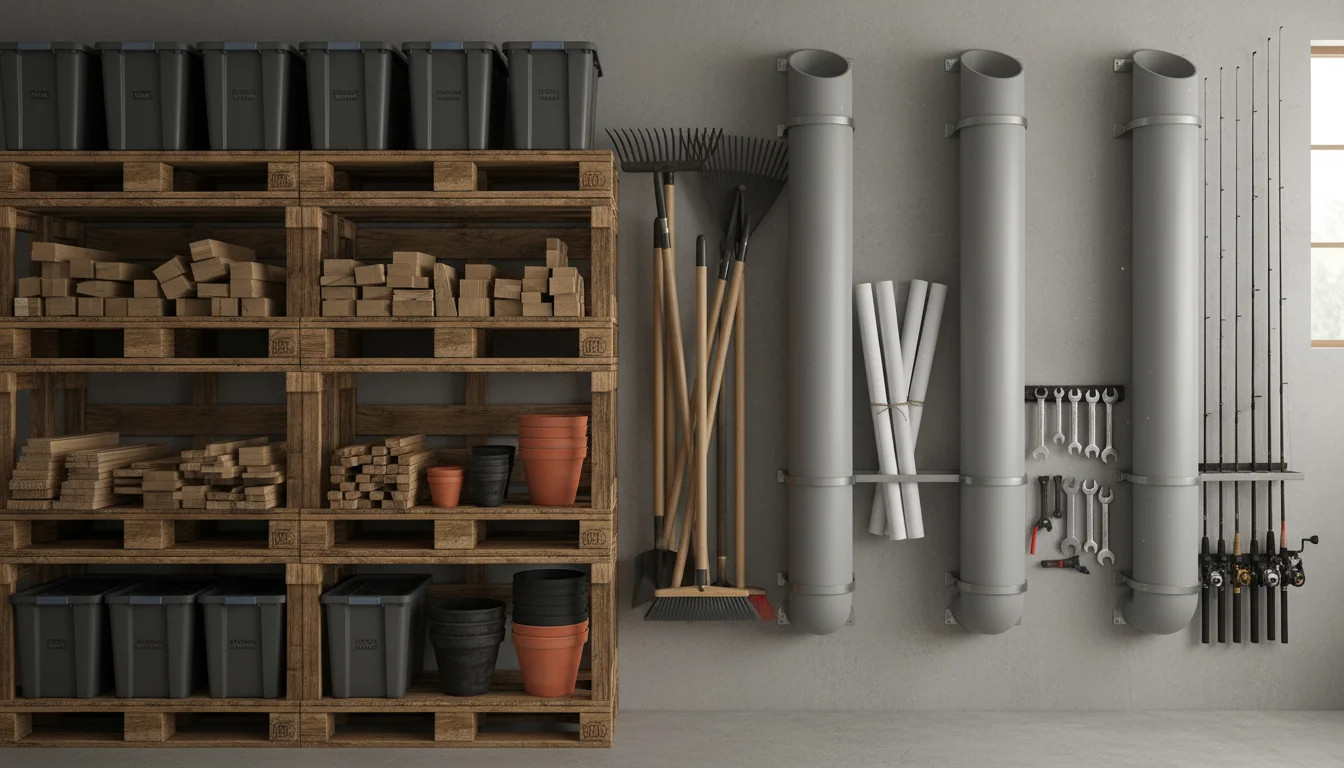
15 Smart Storage Ideas on a Budget
Now that you have decluttered and zoned your garage, let us explore 15 practical and budget-friendly storage solutions. These ideas prioritize affordability, ease of implementation, and maximum impact.
- Repurposed Pallet Shelving: Acquire free wooden pallets from local businesses (ask first!). You can stack them to create sturdy, open shelving units perfect for lumber, large boxes, or gardening supplies. Disassemble them for individual planks to build custom shelves. This is a prime example of effective, budget storage.
- DIY PVC Pipe Organizers: PVC pipes, often available cheaply or as scraps, offer versatile storage. Cut large diameter pipes to hold garden tools, shovels, or brooms vertically against a wall. Smaller pipes organize extension cords or caulk tubes.
- Wall-Mounted Pegboard Systems: Pegboards provide flexible, customizable wall storage. Purchase large sheets of pegboard and a variety of hooks and baskets from a hardware store. You can arrange and rearrange your tools, craft supplies, or small items as your needs change. Paint the pegboard for a clean look.
- Vertical Bike Storage: Hanging bikes on the wall or from the ceiling frees up significant floor space. Simple hooks or pulley systems, often under $20, make this possible. Prioritize vertical space to prevent bikes from cluttering your walking paths.
- Clear Plastic Bins with Lids: Clear bins let you see contents at a glance, eliminating the need for rummaging. Buy them in bulk during sales for the best value. Label each bin clearly. They protect items from dust and pests and stack neatly on shelves, offering excellent garage organization.
- Ceiling Storage Racks: Install wire or wood racks near the ceiling for long-term storage of seasonal items, camping gear, or holiday decorations. This utilizes often-ignored overhead space. DIY versions can use sturdy lumber and brackets.
- Magnetic Tool Bars: Affix magnetic strips to a wall or workbench for easy access to small metal tools like screwdrivers, wrenches, or drill bits. These keep frequently used items visible and within reach, reducing clutter on your workbench.
- Old Cabinets or Drawers: Repurpose old kitchen cabinets, dressers, or filing cabinets. Paint them for a fresh look, and use them to store chemicals, paint cans, or smaller tools. They offer enclosed storage, protecting items from dust and creating a tidier appearance.
- DIY Lumber Racks: Build simple racks from 2x4s to store lumber or long pipes horizontally against a wall. This keeps materials off the floor, prevents warping, and maintains an organized workspace.
- Bucket Organizers: Hang five-gallon buckets on wall hooks for larger items like hoses, pet food, or children’s outdoor toys. Smaller buckets or pails can organize cleaning supplies. This leverages simple, inexpensive containers.
- Adjustable Wire Shelving Units: While some shelving can be pricey, basic wire shelving units (often found at discount stores or online) provide adaptable storage. Their open design makes items visible and allows for good air circulation, preventing musty odors. These are foundational garage shelving ideas.
- Upcycled Jar Storage: Screw jar lids to the underside of shelves, then fill the jars with screws, nails, washers, or other small parts. This keeps tiny items organized, visible, and off your workbench. Mason jars or recycled food jars work perfectly.
- Heavy-Duty Hooks: Hooks of various sizes instantly create vertical storage. Hang ladders, folding chairs, extension cords, rakes, shovels, and more. Install them directly into wall studs for maximum strength. They represent a low-cost, high-impact storage solution.
- Rolling Carts: A simple rolling cart can hold frequently used items for easy transport from one zone to another (e.g., car detailing supplies or gardening tools). Look for metal or heavy-duty plastic options at discount stores.
- Overhead Garage Storage Racks: Similar to ceiling storage, but these often feature metal grates that mount to the ceiling joists, offering robust storage for heavy bins or larger items. While some models cost more, budget-friendly versions exist and deliver significant storage capacity.

Maximizing Vertical Space with Budget Garage Shelving Ideas
One of the most underutilized areas in any garage is the vertical space. Floors quickly fill with items, but walls and ceilings often remain untouched. Effective garage organization hinges on “going vertical.” You can dramatically increase your storage capacity without expanding your garage’s footprint.
When you consider garage shelving ideas, think beyond just traditional freestanding units. Combine various vertical solutions to create a multi-layered storage system:
- Wall-Mounted Shelves: Simple wooden shelves, installed with sturdy brackets, offer robust storage. You can cut plywood or old doors to size, paint them, and mount them directly to wall studs. This allows you to customize shelf height and depth to fit your specific items. For heavy items, ensure proper anchoring.
- Ladder Shelving: Repurpose an old wooden ladder by bracing it against a wall and adding planks across the rungs to create rustic, multi-tiered shelving. This offers unique visual appeal along with practical storage.
- Overhead Pulley Systems: For items like kayaks, canoes, or large storage bins, a pulley system allows you to lift them high above your head, freeing up precious floor space. DIY versions require some mechanical aptitude but use readily available hardware.
- Modular Garage Shelving: Look for plastic or metal modular shelving units at big-box stores. These often come in pieces that you can configure to your needs, expanding as your storage demands grow. They offer a good balance of durability and affordability.
- Scrap Wood Organizers: Use leftover lumber to build custom wall-mounted cubbies for paint cans, spray bottles, or small toolboxes. Even small scraps can form dividers within larger shelves, preventing items from toppling over.
By consciously planning to use your walls and ceiling, you unlock significant storage potential. You move clutter off the floor, improve accessibility, and create a much safer and more pleasant environment in your garage. Always ensure any wall-mounted storage is securely fastened to studs to safely bear the weight of your items.

Maintaining Your Organized Garage (Without Breaking the Bank)
Creating an organized garage is an accomplishment, but maintaining that order requires consistent, small efforts. You do not need weekly overhaul sessions. Instead, integrate simple habits into your routine to prevent clutter from returning.
- The “One In, One Out” Rule: When you bring a new item into the garage, commit to removing an old, similar item. For example, if you buy a new shovel, dispose of the old, broken one. This prevents accumulation.
- Assign a Home for Everything: Every single item in your garage needs a designated spot. If it does not have one, create one. This eliminates the “I will put it anywhere for now” mentality, which quickly leads to clutter.
- Perform Quick Tidy-Ups: Spend 5-10 minutes after a project or once a week putting things back in their place. This prevents small messes from snowballing into overwhelming tasks.
- Label Everything Clearly: Use clear, concise labels on bins, shelves, and containers. This saves you time searching for items and ensures family members can also put things away correctly. Use a permanent marker on masking tape for an inexpensive solution.
- Regular Decluttering Checks: Conduct a mini-decluttering session quarterly. You will find items that have snuck back in, things you no longer use, or new trash. This keeps your system lean and functional.
- Utilize Vertical Space Continuously: Whenever you consider a new item, first think: “Can I store this vertically?” This reinforces the habit of maximizing your wall and ceiling real estate.
You sustain your organized garage through consistent habits. By investing a little time regularly, you protect the investment you made in organizing the space, ensuring it remains functional and stress-free.
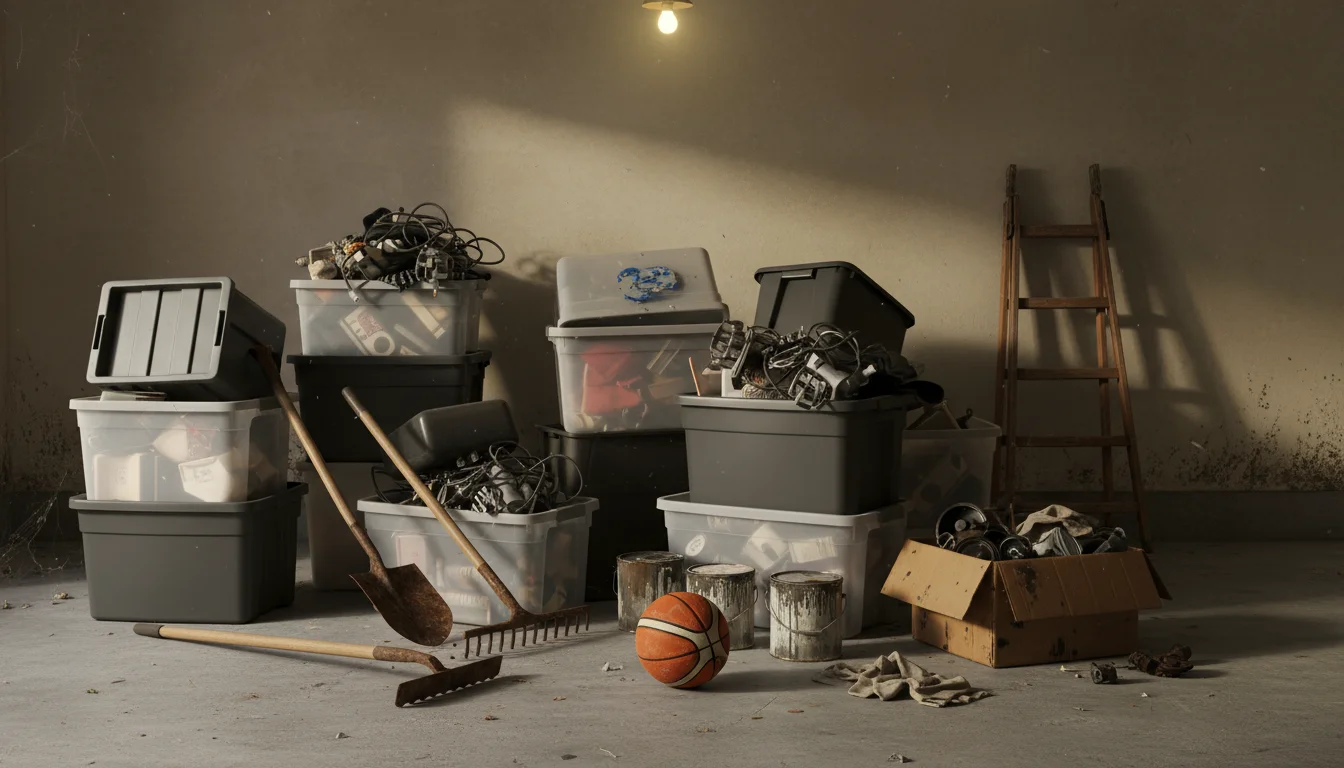
Common Organization Mistakes to Avoid
Even with the best intentions, you can fall into common traps that hinder effective garage organization. Recognizing these pitfalls helps you navigate your journey to a tidy garage more smoothly.
- Organizing Before Decluttering: The most significant mistake is buying storage solutions before you know what you actually need to store. This often results in wasted money on inappropriate bins or shelves and merely shifts clutter from one pile to another. Always declutter first.
- Ignoring Vertical Space: Neglecting walls and ceilings leaves immense storage potential untapped. Relying solely on floor space quickly leads to an overcrowded and impassable garage. Always look up.
- Not Labeling Containers: Storing items in opaque bins without labels makes finding things just as hard as an unorganized pile. You waste time opening multiple containers to locate what you need. Clear, consistent labels are essential.
- Trying to Do It All at Once: Tackling your entire garage in one marathon session can feel overwhelming and lead to burnout. Break down the project into smaller, manageable chunks, such as one wall or one zone at a time. Celebrate small victories.
- Buying Expensive Solutions First: You do not need to purchase the priciest storage systems to achieve organization. Start with budget-friendly options, repurpose what you have, and only invest in higher-cost solutions if a specific, long-term need arises.
- Lack of Flexibility: Your storage needs may change over time. Systems that are too rigid or custom-built for specific items can become quickly obsolete. Incorporate adjustable shelving, pegboards, and modular units that you can adapt.
- Not Involving the Family: If you are the only one who knows where everything goes, maintaining the system becomes solely your responsibility. Involve everyone who uses the garage in the organizing process and teach them the new system.
By avoiding these common missteps, you ensure your efforts lead to a sustainable, functional, and organized garage that truly serves your needs.

Frequently Asked Questions
How often should I organize my garage?
You should conduct a thorough garage organization overhaul once every 1-2 years. However, you maintain daily order by performing quick 5-10 minute tidy-ups regularly, ideally after projects or weekly, and by completing a mini-decluttering check quarterly. Consistent small efforts prevent major overhauls from becoming overwhelming.
What do I do with hazardous waste when decluttering?
Many common garage items, like old paint, motor oil, batteries, and cleaning chemicals, qualify as hazardous waste. You should never dispose of these in your regular trash or pour them down drains. Contact your local waste management facility or municipal government for information on hazardous waste collection events or designated drop-off sites in your area. They will guide you on safe and legal disposal methods.
Can I really organize a small garage on a tight budget?
Absolutely. A tight budget often encourages more creative and efficient solutions. Focus on maximizing vertical space with DIY shelves, hooks, and repurposed items. Prioritize decluttering to minimize what you need to store. Clear plastic bins from discount stores, free pallets, and old cabinets offer substantial storage without significant cost. Your budget directs you towards ingenious, sustainable organization.
How do I make my garage organization kid-friendly?
Make low-level, easily accessible bins for children’s outdoor toys or sporting equipment. Use clear containers so they can see what goes where. Label bins with both words and pictures for younger children. Involve them in the putting-away process, explaining the “home” for each item. This teaches them responsibility and helps maintain the system.
What if my garage has no wall studs for mounting?
If your garage walls consist of cinder block or have widely spaced studs, you still have options. Use masonry anchors and a hammer drill for concrete walls to install shelving or pegboards. For drywall without studs, consider using heavy-duty toggle bolts or wall anchors, understanding their weight limitations. Freestanding shelving units offer a safe alternative when wall mounting is not feasible. Always check product specifications for weight capacity and proper installation.
For expert home organization guidance, visit
Bob Vila, HGTV — Home, Apartment Therapy, The Container Store — Organization Tips and IKEA Home Organization.
Disclaimer: This article is for informational purposes only and is not a substitute for professional advice. Consult professional organizers or specialists for personalized recommendations.

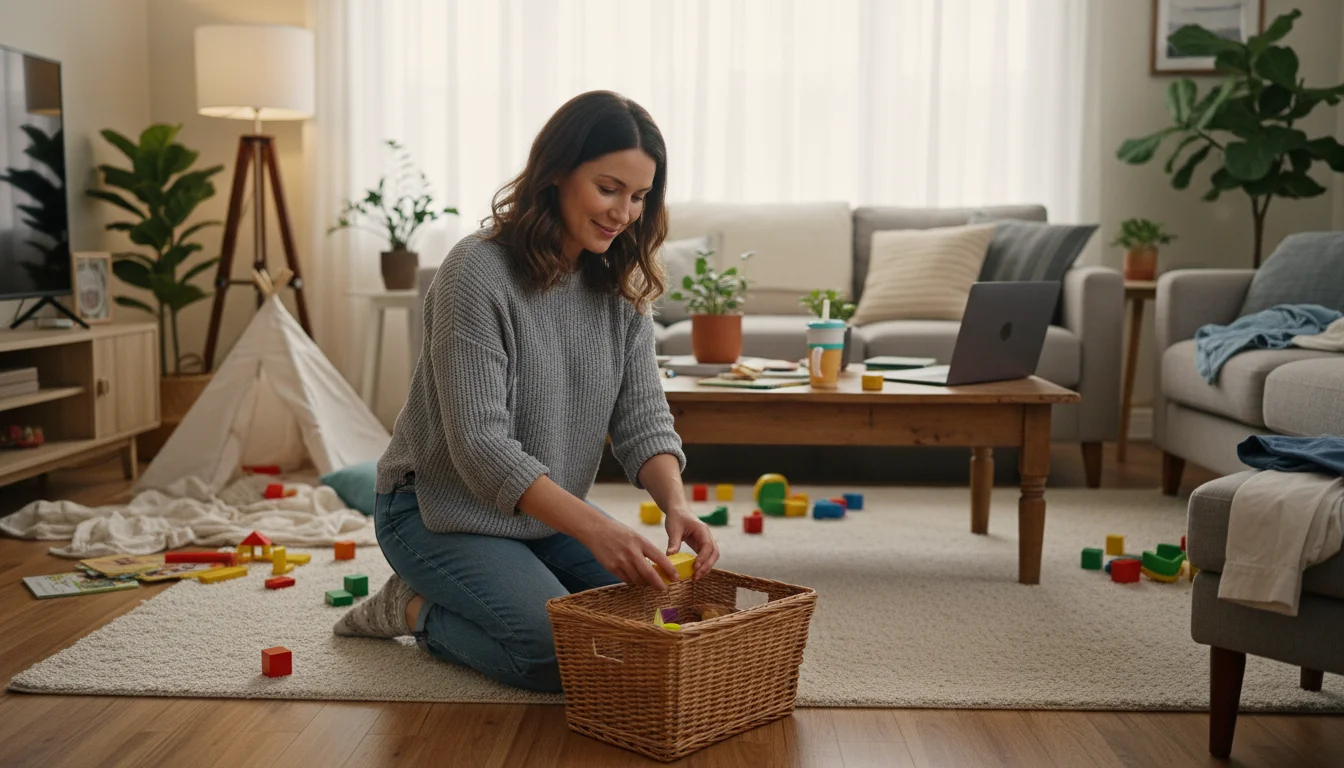

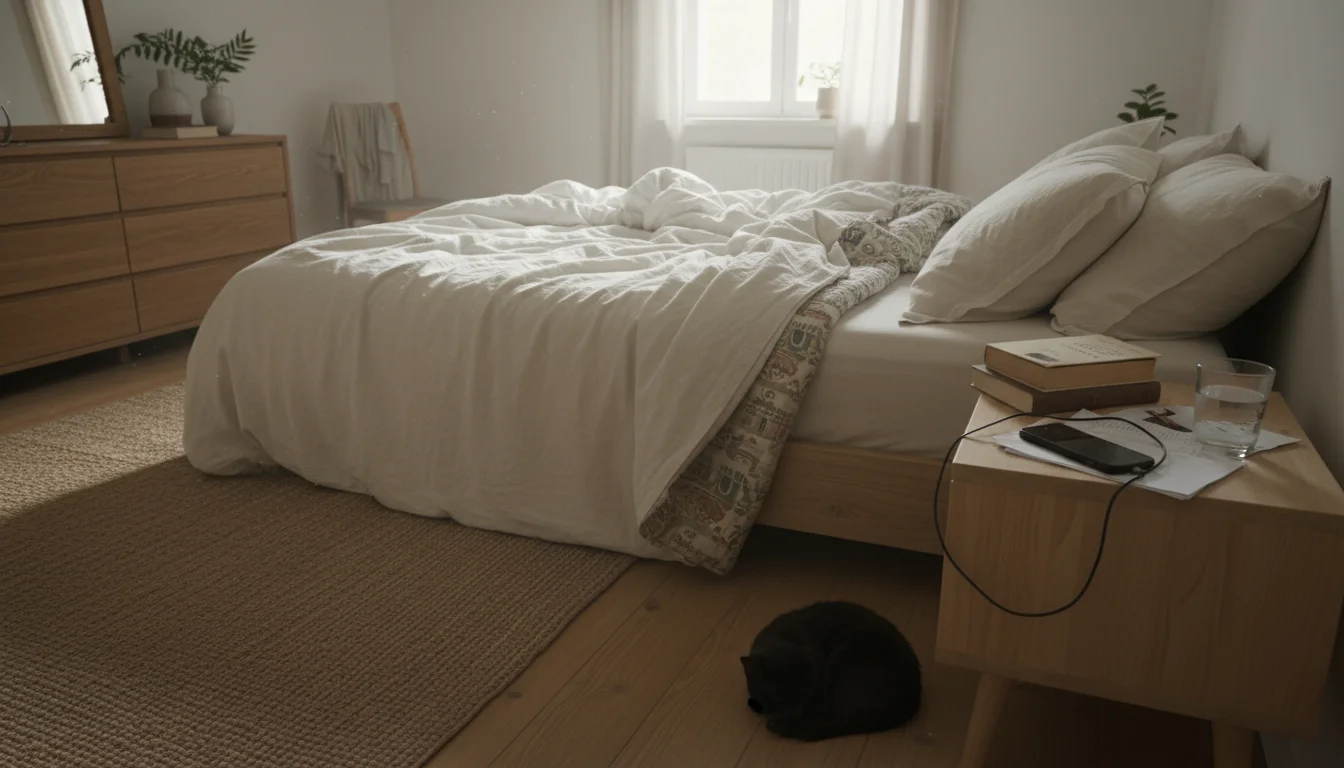

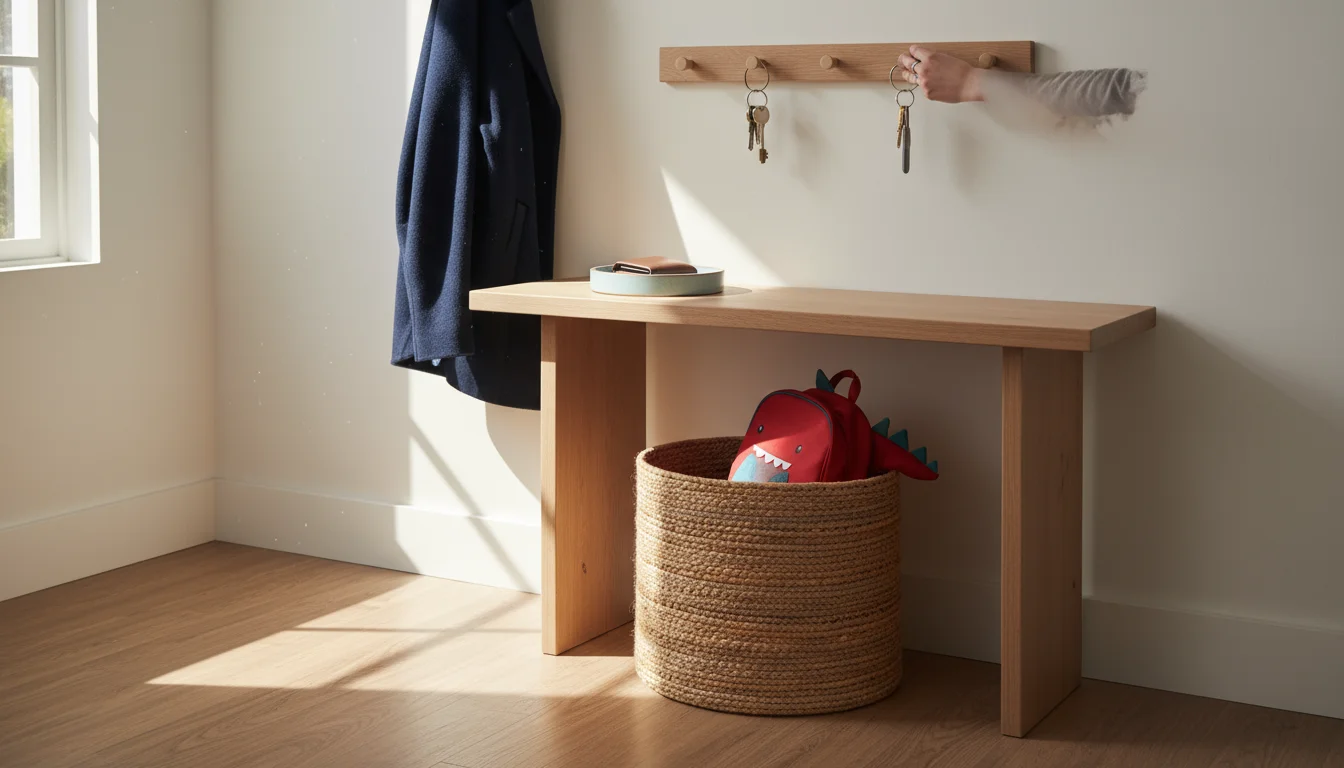



Leave a Reply